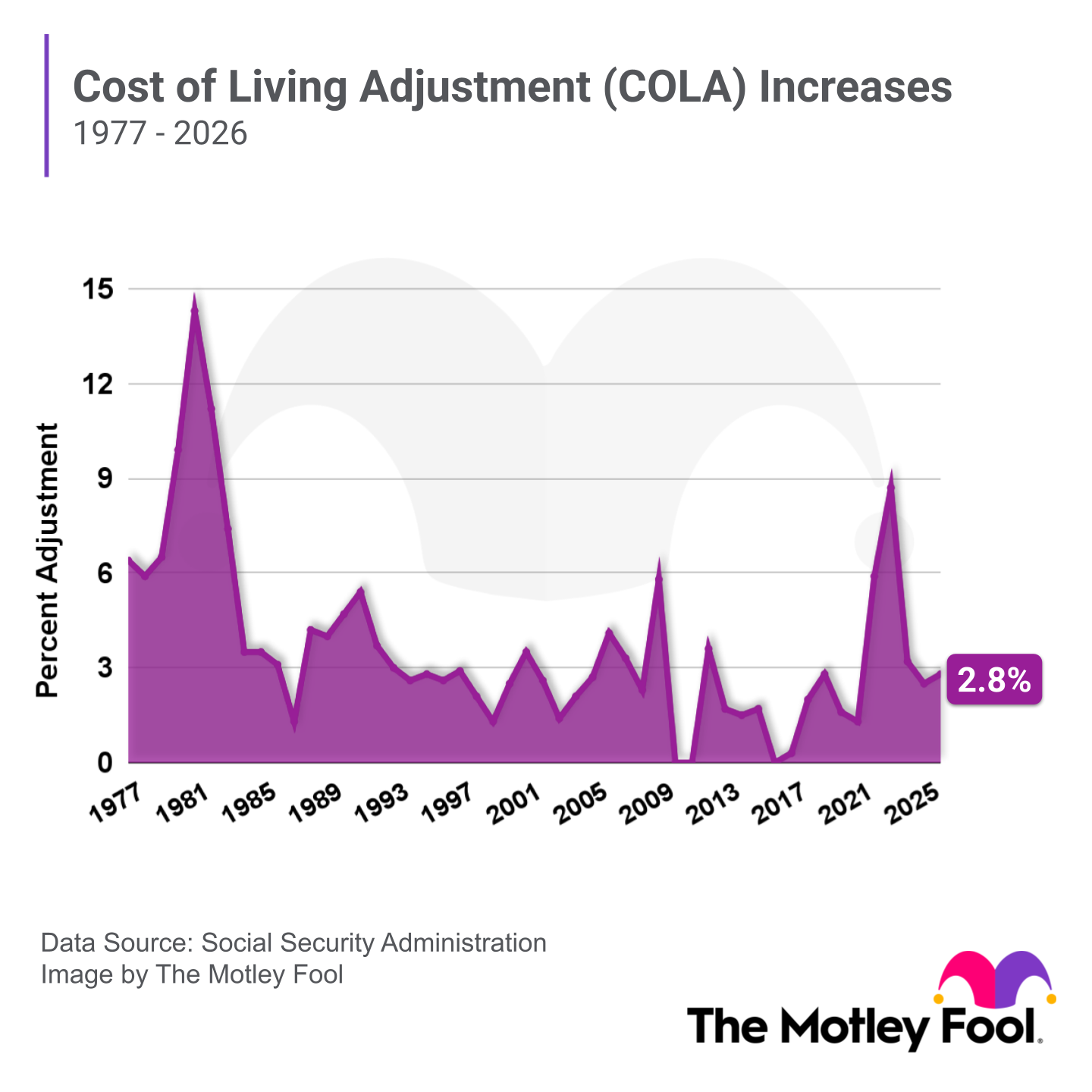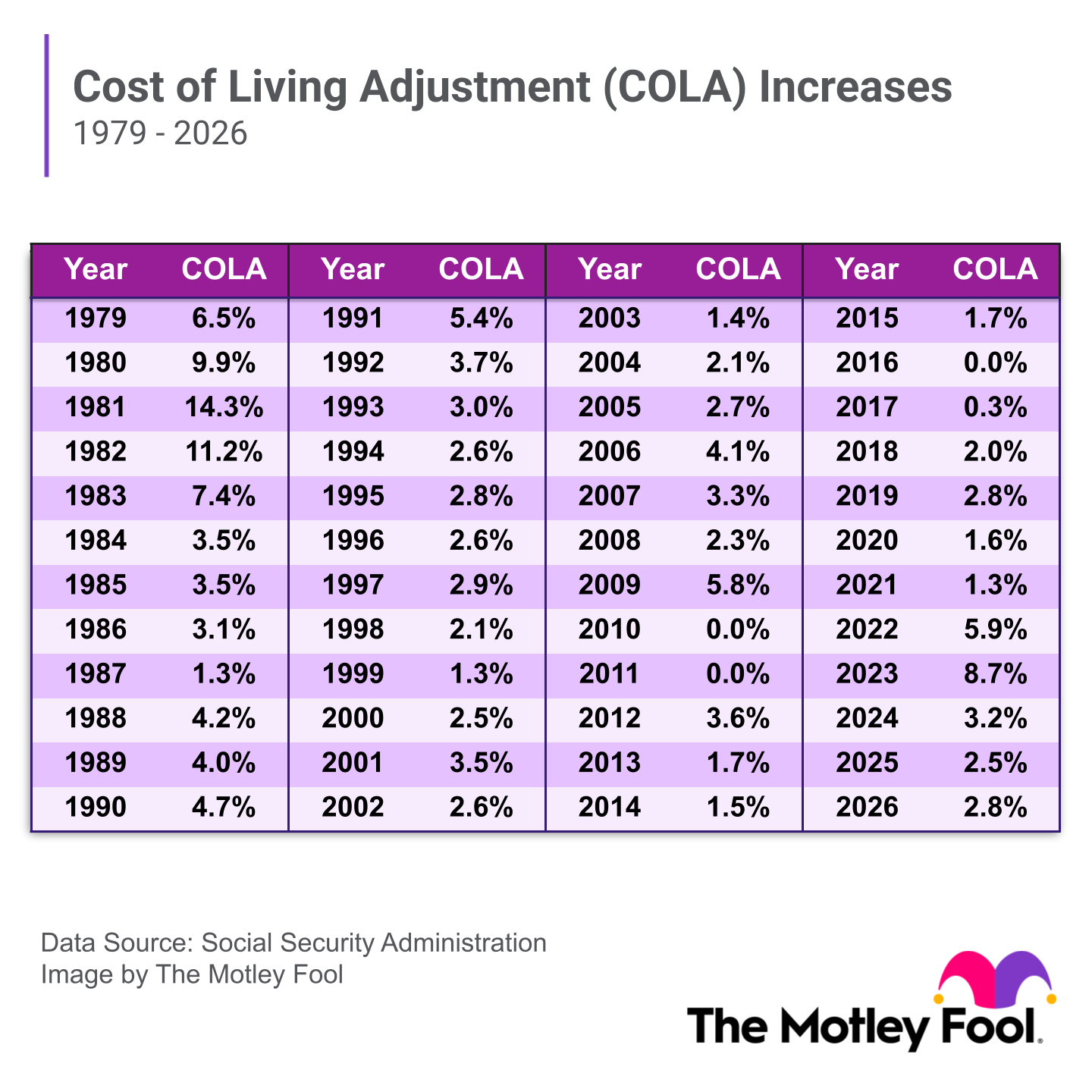If you want to calculate your Social Security retirement benefit, you need to be aware of the Social Security bend points.
The bend points get their name from the shape of the graph created when you plot Social Security benefits against average indexed earnings. You'll notice two distinct points where the line bends -- hence, the term "bend points."
This article will discuss how the bend points affect your Social Security benefit and how you can use them to calculate the check you'll receive in retirement.

What are Social Security bend points?
To understand Social Security bend points, you need to understand the basics of how the Social Security Administration calculates your benefit.
The Social Security benefits formula is simple for anyone who is familiar with how tax brackets work. Similar to tax brackets, Social Security uses income brackets to calculate your primary insurance amount.
Your income, in this case, is your average indexed monthly earnings (AIME), which is based on your work history and adjusted for inflation. Social Security pays back a certain percentage of your AIME in each bracket, paying progressively less as earnings increase.
Those brackets are tied to the year you turn 62. In other words, each retirement cohort will receive slightly different amounts of their career earnings based on when they become eligible for Social Security. For those reaching age 62 in 2026, the brackets are as follows:
AIME | Percentage of AIME paid as benefit |
|---|---|
$0 to $1,286 | 90% |
$1,286 to $7,749 | 32% |
$7,749 and up | 15% |
It's worth noting that the maximum average indexed monthly earnings included in the Social Security formula is $14,358 in 2026. The number is capped because the government only taxes up to a certain income threshold for Social Security. If you earn above that amount, you'll only pay Medicare tax on the excess earnings. So, you won't receive any additional benefits for income above that level.
Calculating your average monthly income
Now that you know how Social Security bend points affect your retirement benefit, you're probably wondering how you can use them to calculate it yourself.
The first step, as noted above, is calculating your average indexed monthly earnings (AIME). Your AIME is based on two factors:
- How much you earned in your career
- When you earned it
Social Security adjusts your historic wages for inflation using its average wage index (AWI). However, it stops adjusting earnings for inflation when you turn 60, even if you don't claim benefits until much later.
The Social Security Administration provides workers with their earnings records. However, you'll need to perform some calculations to determine your AIME.
Go to the Social Security Administration's AWI table and find the year you turned 60 on it. (If you haven't yet turned 60, you can use the most recent year's number.) For each year you earned wages, multiply your earnings by the wage index in the year you turned 60 and divide it by that year's wage index. Any earnings in years after you turn 60 remain the same.
For example, if you turned 60 in 2020 (AWI of 55,628.60), the $10,000 you earned in 1980 (AWI 12,513.46) will be adjusted to $44,455. That's $10,000 * 55,628.60 / 12,513.46.
It'll help if you're handy with a spreadsheet.
Once you have your adjusted earnings, you select your 35 highest-earning years.
Add up the adjusted earnings from those 35 years and divide by 420 (the number of months in 35 years). That number is your average indexed monthly earnings.
Social Security bend points in action
The Social Security bend points are an important feature of Social Security. Social Security is designed to help those who need it most, and the bend points are how it does that.
Ensuring that everyone receives 90% of the first $1,286 they earn in monthly income back as Social Security means that even low-income individuals will receive a meaningful benefit in retirement. It also means high earners won't receive as much of their average indexed monthly earnings as those with lower incomes.
On average, Social Security replaces about 40% of your pre-retirement earnings. And the higher your income, the lower you'll fall below that level.
Related investing topics
Will Social Security bend points affect me?
If you qualify for Social Security benefits, the Social Security bend points will affect how much you receive in retirement.
If you were a low earner, you may not notice the impact of bend points. If your average indexed earnings fall below the first bend point, you'll receive 90% of your pre-retirement income as a benefit at full retirement age.
However, you must have very low earnings (or a short career) to fall below that threshold. Most people will fall in between the two bend points, which equate to average annual earnings between $15,432 and $92,988 in 2026. If that's you, you'll find a significantly lower portion of your income replaced by Social Security. Those earning more will receive an even lower percentage of their pre-retirement income.
However, people who earn more in their careers should plan to save in retirement accounts and other investment accounts to supplement Social Security. It's also important to consider when to start Social Security since claiming later will boost your benefit by 8% per year beyond your full retirement age.
Higher earners need to do more retirement planning to supplement Social Security. The program isn't designed to replace the income of high earners. So, now that you know how the bend points affect your potential Social Security benefit, you can figure out how much you'll need to save to supplement your retirement benefit and make the most of your golden years.










